
All categories
Featured selections
Trade Assurance
Buyer Central
Help Center
Get the app
Become a supplier

(17323 products available)


































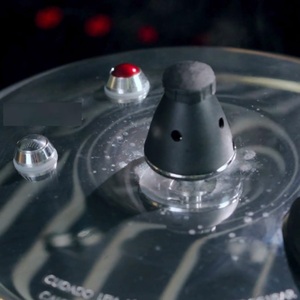
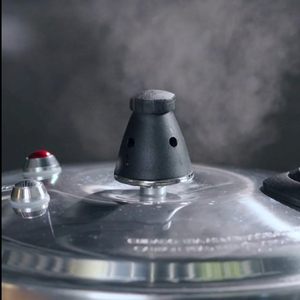
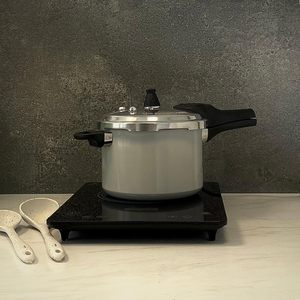
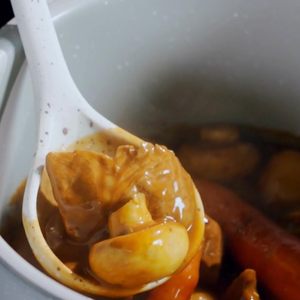
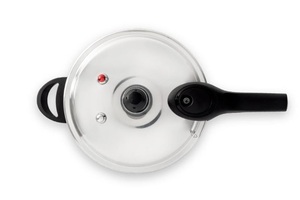





A gas pressure cooker is a kitchen appliance that uses gas as its heat source to create a high-pressure cooking environment. This process cooks food faster than conventional cooking methods. There are various kinds of gas pressure cookers available, each with its own special features designed to meet different cooking needs. Below are some of the most common types.
Standard Pressure Cookers
These are traditional gas pressure cookers that have one or two levels of pressure. They usually come with a simple design and can be used for various cooking tasks such as steaming, boiling, frying, and making curries.
High-Tech Pressure Cookers
These advanced cookers have digital displays and electronic controls. They also come with preset programs for cooking different foods like rice, beans, meat, and stew. They are easy to use and very safe.
Pressure Cooker and Pan Fryer Combo
This type of gas pressure cooker comes with a frying pan. It allows users to cook under pressure and then pan-fry food in one pot. This is very useful for those who want to quickly fry their pressure-cooked dishes.
Pressure Cooker and Slow Cooker Combo
Also known as electric pressure cookers, these appliances can be used as both a gas pressure cooker and a gas stove slow cooker. They have different cooking modes, including pressure cooking, slow cooking, steaming, and making yogurt.
Pressure Cooker and Rice Cooker Combo
Rice cooker pressure cookers are designed to cook rice quickly using the pressure cooking method. Some models also have special settings for cooking other dishes like porridge or soup.
Cast Iron Pressure Cookers
These heavy-duty pressure cookers are made from cast iron material. They can be used on any type of heat source, including induction stoves. Their durability makes them ideal for long-term investments, while their cast iron construction ensures even heat distribution during cooking.
Aluminum Pressure Cookers
Aluminum pressure cookers are lightweight and budget-friendly options compared to stainless steel models. They offer good conductivity and are suitable for everyday cooking tasks.
Stainless Steel Pressure Cookers
These pressure cookers are made of stainless steel, which is corrosion-resistant and durable. They are compatible with all types of cooktops, including induction. Stainless steel pressure cookers are known for their strength, stability, and resistance to reactive with food.
A gas pressure cooker has a simple yet effective design. Its main parts work together to create a controlled cooking environment that uses high pressure to cook food quickly and efficiently.
Body:
The body is made by shaping thick stainless steel or aluminum into a pot-like form. The body is then polished to make it shine and look good. It is often coated with a layer of non-stick material so that food does not stick to the bottom when cooking. This body forms the main structure within which all cooking takes place.
Lid:
The lid of the gas cooker is equally thick and strong. It forms a tight seal over the top of the pot-like body. There are special rings around the edge of this lid that compress to form an airtight seal when closed. This compression is what allows pressure to build up inside the cooking pot.
Handles:
The handles are made by shaping the same material used for the body or lid. Long handles are fixed firmly on either side of the cooking pot body so that people can carry it around easily. Shorter, sturdier handles are attached to the lid for locking and unlocking purposes.
Safety valve:
The safety valve is a small device that prevents accidents. It is designed to release excess steam when the pressure inside the cooker becomes too high. This prevents the risk of explosion due to over-pressurization. The valve is made of metal and has a spring mechanism that automatically opens at preset pressure levels.
Regulator:
A pressure cooker regulator is an essential component. It controls the amount of steam produced during cooking. It is placed on top of the lid and consists of a heavy metal disc with holes. When cooking starts, this disc moves up and down, allowing steam to escape or building pressure inside the cooker. Regulators are designed to maintain a steady pressure level, which is crucial for high-speed cooking.
The gas pressure cookers are used in many scenarios. They are suitable for domestic applications. They are great for cooking food quickly. These include making stews, beans, tough meats, soups, and whole grains. They can also be used for steaming vegetables. This appliance can work as a deep fryer. It can steam, sauté, and make jams and jellies. Pressure cookers can be used to make a variety of dishes, including Indian, Caribbean, and Southern foods. These are cuisines that often use beans and tough cuts of meat. They are also suitable for institutional use. Schools, colleges, and hospitals can use pressure cookers to prepare healthy meals quickly and easily.
Pressure cookers are also extensively used in restaurants and catering businesses. These tools help chefs prepare dishes rapidly and maintain the nutrients and flavors of the ingredients. In large-scale cooking operations, gas pressure cookers can be used to tenderize meats quickly. They can also prepare beans and grains and steam large quantities of vegetables. They can increase the efficiency of the kitchen. They save energy, which is a critical resource in the food service industry.
Gas pressure cookers are also used in remote areas. They are great for places with limited electricity access. These cookers save fuel and reduce cooking time. Therefore, they are ideal for camping and outdoor cooking. They are also extensively used in scientific laboratories. Researchers use them for experiments that require controlled cooking under high pressure. Gas pressure cookers are also used in industrial applications. They are used for processes like sterilization, extraction, and material testing.
Safety Features:
Safety is paramount when choosing a gas cooker. Look for pressure cookers with safety features such as pressure regulators, safety locks, and release mechanisms. These features help maintain safe levels of pressure within the cooker and prevent accidental openings when the cooker is pressurized.
Durability and Warranty:
Consider the durability and warranty of the gas cookers. Opt for cookers made from durable materials with long warranties. A durable cooker will withstand regular use and last for many years, providing value for money.
Size and Capacity:
Choose a gas pressure cooker that meets the cooking demands. If cooking for a small family, a 2-4 liter cooker will suffice. However, for larger families or batch cooking, an 8-liter cooker is more suitable. Additionally, consider the size of the cooker to ensure it fits in the kitchen space and on the gas stove.
Cooking Time and Efficiency:
The cooking time and efficiency of the gas cooker are crucial factors to consider. Pressure cookers cook food quickly by maintaining high pressure inside the cooker, increasing the boiling point of water, and cooking food faster than normal cooking. Therefore, opt for cookers with good sealing and sturdy construction for efficient cooking.
Ease of Use and Maintenance:
Choose a gas pressure cooker that is easy to use and maintain. Look for features such as clear instructions, easy-to-use knobs or handles, and removable parts for cleaning. An easy-to-use cooker will make cooking more enjoyable and less time-consuming.
Compatibility with Cooking Needs:
When choosing a gas pressure cooker, consider compatibility with cooking needs. Determine what types of dishes will be cooked most often and ensure the cooker has the necessary features and functions to meet those needs. For example, if preparing curries or stews, a cooker with a larger capacity and multiple cooking modes would be ideal.
Quality of Materials:
Consider the quality of materials used in the construction of the gas pressure cooker. Opt for cookers made from high-quality stainless steel or aluminum, as these materials are durable, heat-efficient, and resistant to corrosion. Additionally, ensure that the handles and knobs are sturdy and heat-resistant for safe and convenient usage.
Q1: What is the difference between a gas pressure cooker and a regular pot?
A1: A gas pressure cooker cooks food quickly by raising the temperature inside the sealed pot through steam creation and pressure increase. At the same time, a regular cooker only uses boiling water to cook food at lower temperatures and take longer.
Q2: How does a gas pressure cooker work?
A2: When cooking with a gas pressure cooker, the cooker itself forms a tight seal, and heated gas creates steam from the liquid inside. This steam generates pressure, raising the boiling point of water and cooking food faster than usual.
Q3: What are the benefits of using a gas pressure cooker?
A3: Gas pressure cookers are faster, more energy-efficient, and retain nutrients better than other cooking methods. Moreover, they can tenderize meat and beans and allow versatile cooking, including steaming, boiling, frying, and braising.
Q4: Is cooking with a gas pressure cooker safe?
A4: Yes, cooking with gas pressure cookers is safe if used properly. Modern cookers come with multiple safety features, such as locking lids, pressure release valves, and safety interlocks, to prevent accidents.
Q5: What types of food can be cooked in a gas pressure cooker?
A5: Almost anything can be cooked in a gas pressure cooker, including stews, soups, curries, grains, beans, lentils, vegetables, and even desserts like puddings and cakes.